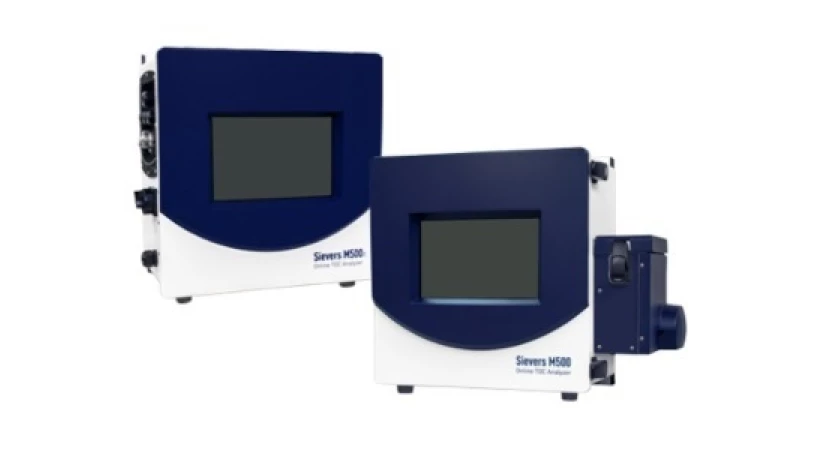Article
TOC and their types
Nov 29, 2022

Sunil Ingle
EHS General Manager
Water purity is vital in a variety of industries, including pharmaceutical and semiconductor manufacturing, as well as power generation. Bacteria and other organic substances in water can indicate a failure infiltration, storage, or other components and systems. If these chemicals are not filtered, they can cause severe problems, ranging from destroying expensive industrial systems to negatively affecting product quality and endangering profitability. Detecting and quantifying the presence of these organic pollutants can help protect consumers, industry, and the environment.
In this blog, we will look at how pharmaceutical companies deal with organic challenges. Total Organic Carbon (TOC) analysis has become the standard quality test for water purity and injection of water by organizations such as the Japanese Pharmacopoeia, United States Pharmacopoeia (USP), and the European Pharmacopoeia. The USP has gone so far as to demand TOC water monitoring at all stages of the pharmaceutical sector.
What exactly is TOC?
The level of organic molecules or pollutants in filtered water is measured using TOC. TOC is an analytic tool that assists businesses in determining whether the water they use is pure enough for their procedures. Carbon materials are present in all water, no matter how pure. Many of these materials enter the water from the source or via materials and systems used in purification and manufacturing. They can also originate from workers directly participating in the processes. Natural or changed products of living systems and man-made and synthetic chemicals may be included.
What does TOC look like?
TOC analysis evaluates the following factors:
• Inorganic carbon (IC)
• Nonpurgeable organic carbon (NPOC)
• Purgeable organic carbon (POC)
• Total carbon (TC)
• Total organic carbon (TOC)
What are the TOC Analysis Components?
TOC analysis consists of three steps: sampling, oxidation, and detection.
To meet regulatory requirements, it is advised that the sample system have automatic sampling, sparging, and acidification for TOC analysis, automatic dilution capabilities, and autocalibration using a single stock standard.
The organic carbons need to be oxidized to determine the TOC level. There are numerous oxidation technologies available on the market today. Among the methods for converting TC to CO2 are:
• Photocatalytic oxidation: In the presence of UV light, organics oxidize to carbon dioxide.
• Chemical oxidation: In a UV-irradiated chamber, combine the sample with Persulfate to convert organics to carbon dioxide.
• High-temperature combustion: In a chamber heated to 95-100 degrees Celsius, combine the sample with an oxidation catalyst to convert organics to carbon dioxide.
According to studies, combining Persulfate with heat and UV light yielded a more accurate and faster analysis.
Conductivity detectors and non-dispersive infrared (NDIR) and are the two types of detecting technologies used by total organic carbon analyzers (direct and membrane). Because conductivity detectors have stability and interference concerns, NDIRs, which consist of a light source, cell, and detection part, are more prevalent. Changes in pH and temperature can interfere with both types of conductivity detectors. Furthermore, all conductivity techniques are affected by gas interference, such as chlorine, sulfur dioxide, or other noxious gases.
TOC Technologies
The primary distinction between TOC technologies is how organics are oxidized.
Total organic carbon analyzers all conduct two functions: measuring the CO2 produced and oxidizing organic carbon in water to CO2. The technology used to oxidize the organics in the water sample and the methods utilized to detect the generated CO2 are what distinguish each total organic carbon analyzer.
Methods of Detection
The three most common commercial CO2 detection technologies are:
- Non-dispersive infrared (NDIR)
- Direct Conductometric (Non-selective Conductometric)
- Membrane Conductometric Detection (Selective Conductometric)
CO2 is measured in the gaseous phase by NDIR TOC detectors, while CO2 is measured in the liquid phase using conductometric TOC detectors.
Non-Dispersive InfraRed (NDIR)
A preliminary reading is taken by the non-dispersive infrared (NDIR) detector to establish a baseline. When the sample approaches the NDIR cell, the carbon dioxide molecules absorb infrared light from the source, reducing total infrared light transmittance to the detector. The transmittance percentage recovers to 100% after all of the carbon dioxides have been removed from the cell.
Technologies for Conductometry
Now, CO2 in the liquid phase is measured with conductometric TOC detectors.
● Direct conductometric detectors
● Membrane conductometric detectors
As already mentioned above,
Conductometric detectors are the two types of conductometric detectors. The two conductometric detectors have good sensitivity and consistent calibration.
Direct conductometric detectors
The direct detector is more vulnerable to interference from ionic contaminants, acids, bases, and halogenated organics than the indirect detector.
Membrane conductometric detectors
Here the TOC is Measured as per the US FDA 643 Chapter, where TC and IC are Measured Separately and the difference is said as TOC. Each TC and IC Measurements are taken from the sample which passes through the Membrane which allows Co2 to pass through it. As the result the TOC is Accurate and has LOD as minimum as 0.03ppb.
Why is TOC measurement important?
High-quality water is a critical element used throughout the pharmaceutical manufacturing process. Ensure that the water is pure to help eliminate bacteria and other organic substances' impact on product quality. Organic substances react with other elements to form molecules that can be hazardous to products and the environment once discharged. TOC analysis, in addition to water purity standards, can validate the cleaning processes used by corporations to maintain drug-manufacturing equipment.
Conclusion
If you want more information about TOC, visit SVAN Analytical Instruments for professional service from our team of experts.